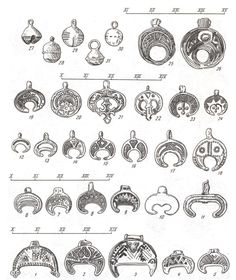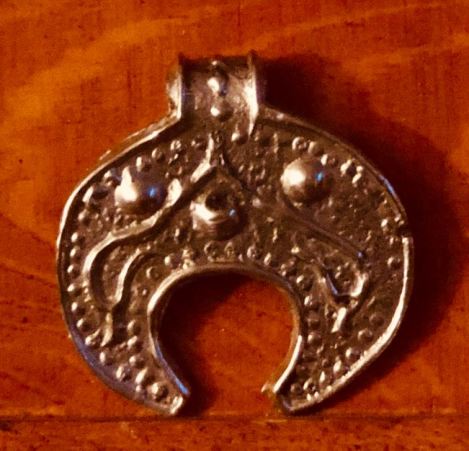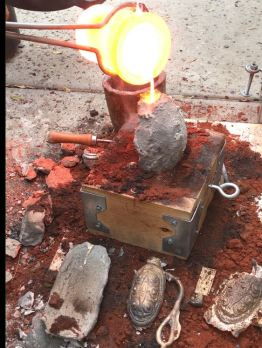Around 2007, I decided that I wanted to learn to cast pewter. I got that bug in my bonnet when attending a class taught by Master Thorvald, of Calafia (at the time). Mostly I made trinkets in sand-stone, which takes a bit to get the hang of (see the masters from period and you’ll quickly appreciate how long they must have been working at the art to get to their level after you do some of this yourself!
Not long ago, I was tasked with making 300 site tokens for a Fall Crown tournament in Caid. Having just experienced a whirlwind tour of Viking era sites in Scandinavia, and with the thought that our reigning monarchs have a Russian personae, it seemed like an early period design would be appropriate. Then my lovely wife let me know she wanted me to try to make a luna, so two birds were about to be killed, or at least somewhat maimed, by a single stone.
Lunistas as are often associated with Viking finds are actually of Slavic and Russian style, which was presumably spread through Northern Europe by Scandinavian traders. Although luna-shaped pendants have existed well before Middle Ages and are found in multiple cultures, the Slavic/Russian type is fairly unique. Those made of bronze and silver as seen on the chart below have been found as early as the 11th century in sties such as Novgorod, Bladimirskie and Gnezdovo. The granulation and raised portions are either cast in with the mould, or are added after on a previously undecorated luna form in a very delicate process involving melting specially scored wire and beaded metal (which is an incredibly time consuming process). Both sorts can be seen in this sketch of Slavic archaeological finds in this Russian Civilization web-journal:

“Jewelry Made of Copper and Alloys.” Russian Civilization. 11 Oct. 2007. Web. 19 Sept. 2015
Here is the piece I went with, which was fun to work into the stone. The left and right examples are the same cast, but with different levels of blacking and polish, which shows how different these look depending upon the finish:

This is stone cast and therefore not as clean as a positive-sand-cast model of sorts would be, but heck, it was fun to make (first attempt at this sort of thing!)
More recent pewtering projects:
A pilgrim’s whistle (part of the “WAAD” line of trinkets), tudor roses (pewter and bronze), geese and hollow slush-cast ampule.





Leave a comment